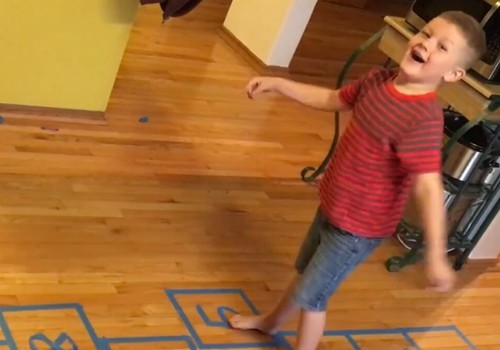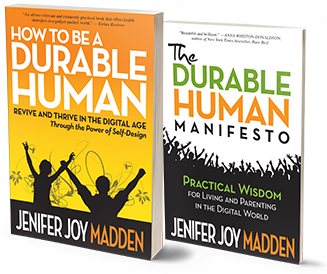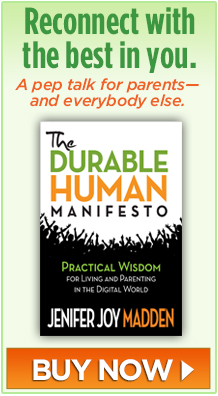
The ways school systems handle the coronavirus shutdown varies all over the map. Some sent home 90-page packets. Others are more laissez-faire, providing “academic resources” that require neither completion nor grading. But there’s one thing each kid everywhere needs every day: to move around.
They say parents are a child’s first teacher. In this unprecedented situation, parents may be their only teachers, so they need to take charge of the home classroom through structure and guidance.
We all know at some level that physical activity helps kids to be durable in body and mind. We are human animals, after all, and are made to move. Sitting in one place too long makes us unhappy and much less healthy.
To know how to bake in exercise in a family’s 24-hour day, you need to know the basics:
Number One: Kids need an hour of physical activity every day.
Luckily, the exercise still “counts” if the 60 minutes is broken into smaller chunks.
Number Two: Kids using screens need a movement break at least every hour.
This goes for kids (and adults) doing home work or being on a screen for entertainment.
Now for the hard part: remembering. That’s why you need to:
Put movement on a schedule.
Every hour sitting down on the hour, everyone can do one minute of movement. As you can read in How To Be a Durable Human, studies show our brains are able to take in external input of information for only about an hour, then it becomes much harder to retain new information. Physical movement breaks up the mental logjam.
When I’m writing during the day, for instance, I do 60 jumping jacks for every hour I’m on a keyboard. That not only keeps my metabolism chugging, it invariably jumpstarts my creativity. If I’ve been grasping for a word and I take a movement break, invariably when I return to the keyboard, a word pops into my head.
To the count of 60, kids can let loose with random skips, hops and tumbles; jump rope; do pushups—or a combo of them all. 360-degree movement has the added benefit of stimulating the brain’s limbic system, which is associated long-term with emotional stability.
If you’re working from home and able to manage your own schedule, you can be an hourly DJ, playing consecutive minutes of favorite tunes as the day goes on.
That takes care of maybe 10 minutes of the daily 50 minutes of needed exercise.
They can close the gap with good old-fashioned play. Because kids need to be separated from others doesn’t mean they can’t go outside. Lord knows they’re worried, so being out in the breeze and sunshine is an instant stress-reliever. Besides soothing the soul, as US Supreme Court Justice Louis Brandeis once said:
Sunlight is said to be the best of disinfectants
– Justice Louis Brandeis
Shooting hoops in the driveway counts as exercise, as does doing workouts for a sport.
Parents, by the way, also need a daily dose of physical activity. Now that the days are longer, a family routine would be taking an after dinner walk or bike ride together.
If kids aren’t able to go outside, games like hide and seek help them blow off steam, get away from screens, and up out of their chairs. Or you could try DIY kitchen-floor hopscotch made with painter’s tape. Look how these darling little ones can hardly wait as their dad creates the game. Side benefits besides learning to count: developing core strength and balance.
A wise grandma friend of mine is buying her grandson a stationary bike in lieu of his having a sport.
For those with Amazon’s Alexa, parents give thumbs up to Animal Workout, where kids creep and crawl like other animals. (Adults have fun playing, too).
Those are at least some ideas for School at Home Principle Number One: make sure kids get enough physical activity. At least one minute per hour of sitting down. At least one hour every day.
Ask your kids to help you come up with ideas for your family.
To promote 24-hour wellbeing, be sure to download your free Family Balance Checklist.

About the author: Jenifer Joy Madden is a health journalist, digital media adjunct professor, TEDx speaker, founder of DurableHuman.com, and parent of three self-reliant durable young adults. Jenifer’s words have appeared on news outlets ranging from ABC News to The Washington Post to Discovery Health Channel. She’s written two life- and tech-balance advice books, has a line of Durable Human products, and hosts the parent ed classroom, Durable U.
Find Jenifer’s books on Amazon and Audible: The Durable Human Manifesto: Practical Wisdom for Living and Parenting in the Digital World and How to Be a Durable Human: Revive and Thrive in the Digital Age Through the Power of Self-Design.
Download a free PDF of The Durable Human Manifesto here.



